This e-article is the concluding piece of a seven-part series that examined the cultural shift in women’s basketball in the USA and how it translated to the introduction of American netball into the UK. The articles have established the need for further extensive academic research on women’s basketball and netball. Both sports have been largely neglected by sport historians on both sides of the Atlantic in favour of story-telling his-stories, as witnessed by the overwhelming number of US-based player and coach biographies, and college team histories that contain historically significant data that requires unpicking. If any sport needs an interdisciplinary approach – women’s basketball does!
The take-up of basketball in 1892 by America’s ‘New Woman’ was possible because of the cohorts of females seeking greater access to vocational education and greater diversity in their leisure activities. Basketball provided females from all social backgrounds, with a game that adequately expressed their aspirations for both the short- and long-term. It was against a background of issues relating to social class, gender, race, and culture, that women’s basketball flourished through compromise and diversification. Joan Hult argued that five major themes have driven academic research: the femininity versus masculinity debate; the dominance of theories on the biological capabilities of the female body; the notion of separate gender and cultural spheres; the institutional angst caused by ‘unwomanly’ behaviour; and, ‘scientific’ medical views.[1]
Expressions of female vulnerability both physical and mental were answered by an elite section of the middle classes who aspired to take up a more liberal role in American society. The elite middle-class college system served to give the aspiring sportswoman the opportunity to explore her own potential within strict institutional guidelines. It was from this foundation that women’s basketball dispelled many of the concerns regarding women’s athletic potential both real and imaged. The era of the New Woman was exemplified by the image of the ‘Gibson Girl’ that enabled great advances to be made in female participation levels in sport and leisure activities. Female PE teachers in universities, colleges and schools, established the notion of competitive female sports. It was women’s basketball that did much to push hard against a man-made door that was resistant to being fully opened.
The first officially recognised women’s intercollegiate game was played between the University of California (at Berkeley) and Stanford University on 4 April 1896. It was possibly the first competitive game of women’s basketball that had a written account penned by females. The captains of the Stanford and Berkeley teams published their accounts of the game in The Examiner on 5 April 1896.
- Stanford versus California University, 1896
The captain of the victorious Stanford team, who won 2-1, was Miss Stela McCray. She suggested that their victory was due to superior team work in keeping possession of the ball. McCray reflected that their lack of regular practice and the superior size of the Berkeley girls had made the game closer than it should have been. She was glad that the scores were so close, as she claims this resulted in no bitterness between the teams, as she was hoping that they would have a return match within the next year.
- Miss Stela McCray of Stanford
- Miss Elizabeth Griswold of Berkeley
The captain of the Berkeley team was Miss Elizabeth Griswold. In her account of the game she contradicts McCray, suggesting that the Stanford team were very well drilled and that they had been playing outdoors on a regular basis. Griswold also felt that the methods of play adopted by both teams were so different that it resulted in the play being to the detriment of her Berkeley team. She commented that ‘Stanford had not been trained under such strict rules as had Berkeley’. It was not until the adoption of officially sanctioned rules and regulations of play by Senda Berenson that women’s basketball was able to develop as a national and international game.
The period 1892-1895, saw women’s athletics struggle for recognition as a legitimate activity in US universities and colleges. However, many female athletes used the ‘new game of basket-ball’ as a vehicle in striving for emancipation. This series of articles has taken examples of restrictive practices imposed on female basketball players and juxtaposed them with the approach adopted by the pioneers of women’s basketball. The period 1895-1899 provided evidence of the extent of opposition to women’s basketball by a white, male-dominated Western society. The girl’s game responded to the external factors that threatened its very existence by adapting the rules of play to the internal and external constraints placed upon the game. The result was a demarcation of female player’s roles and the spawning of variations of basket-ball such as ‘Basquette’ and Net Ball.
The battle for equity was fought on and off the court for 80 years. The 1972 US Education Act contained legislation, under Title IX of the Act, to prevent Federal educational institutions from discriminating on grounds of gender. The various carefully crafted versions of basketball had created the opportunity for female participation in: 5, 7 & 11-player girls’ basketball, ‘Basquette’, 6-player Iowa girls’ basketball, and American Netball. Versions of the boy’s and girl’s games were transported across the Atlantic in 1892, with English Netball emerging by 1901. Thus, a new chapter in the development of women’s basketball began in the UK.
Article © Keith Myercough
References
[1] Joan S. Hult and Marianna Trekell, (Eds.), A Century of Women’s Basketball: From Frailty to Final Four, (Reston: American Alliance, 1991), 3.

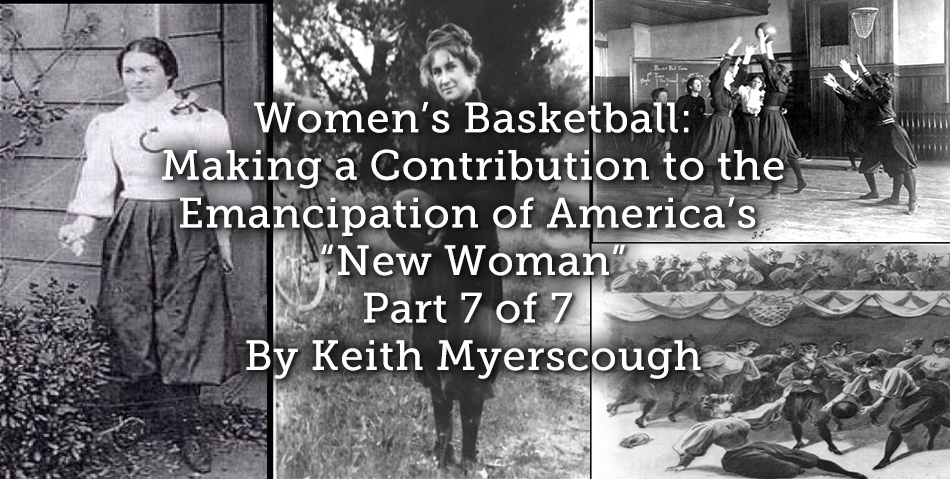

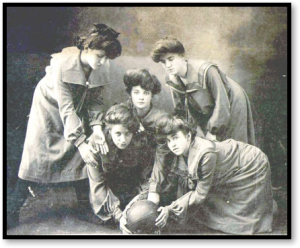
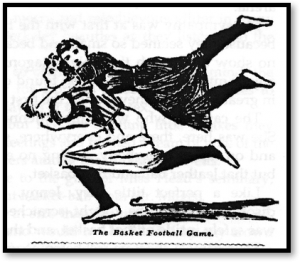
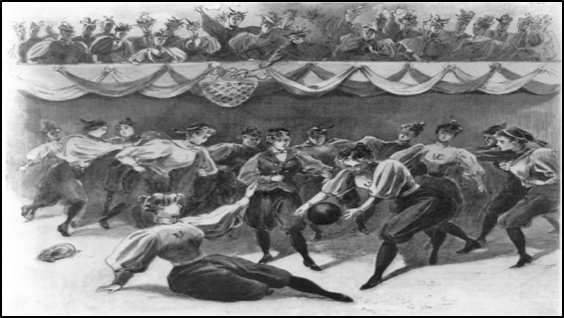
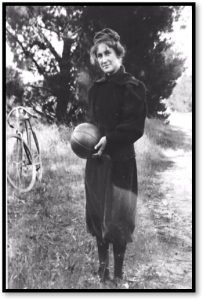
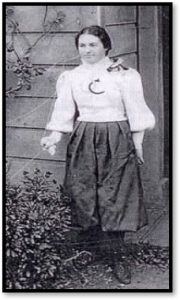
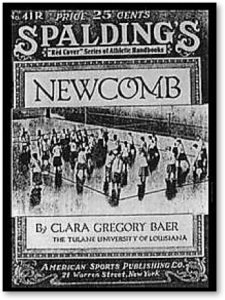
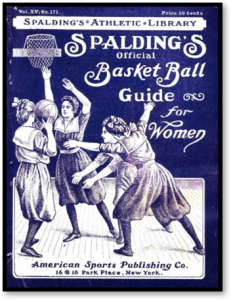

![Playing Football with the Chorus Girls: <br>Vaudeville Women’s Football in Naples [1931]](https://www.playingpasts.co.uk/wp-content/uploads/2020/06/PP-banner-maker-440x264.jpg)


